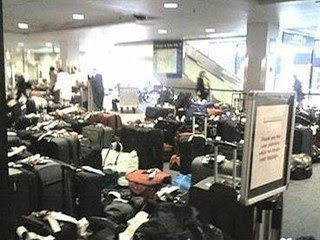
Traffic at the Interservice/Industry Training, Simulation and Education Conference (I/ITSEC) in Orlando, Fla., this week is a little less and the exhibit floor is a little smaller – seems like a whole hall is missing – than last year, but the technology showcased is as cutting edge and just as plain cool as it always was.
Traffic at the Interservice/Industry Training, Simulation and Education Conference (I/ITSEC) in Orlando, Fla., this week is a little less and the exhibit floor is a little smaller -- seems like a whole hall is missing -- than last year, but the technology showcased is as cutting edge and just as plain cool as it always was.
The annual trade show focuses on technology for training the warfighter such as flight simulators, avionics trainers, vehicular simulators, training systems for avoiding and detecting improvised explosive devises (IEDs), flight displays, image generators, rugged laptops, etc.
While many exhibitors say that traffic is slower than in years past, the market is still strong as military funding for training systems continues to remain steady for new systems as well as retrofits.
Highlights for me at the show aside from my fun with the Rockwell Collins heads-up display pictured here, included a demonstration of manned and unmanned aerial vehicle (UAV) teaming from L-3 Communications.
L-3 engineers showed that a UAV teamed with a Stryker unit, a rescue helicopter, and an attack helicopter can effectively work together on a mission through streaming video that all have access too. They can train either in the same room or thousands of miles apart.
The L-3 concept will enable warfighters to get this type of team training much earlier than in the past, better preparing them for when they deploy, L-3's Michael Rapavi, told me.
The concept that intrigued me the most was the COMBATREDI portable training system for dismounted soldiers from Cubic in Orlando. The system is worn by the soldier -- run by a computer on his back -- and uses sensors located on his body to determine if he is running, crouching, jumping, etc. Sensors also detect the position of his weapon. The sensors communicate wirelessly with in the system.
Soldiers can use it anywhere even in their living room if need be.
Another thing that I learned in my meeting with Cubic was a new military acronym … just when I thought I heard them all.
I asked whether or not the COMBATREDI system will be able to update its scenarios with real-time intelligence from the field and was told that that will be a P3I, which stands for pre-programmed product improvement ... in other words new capabilities that will be added later.
I heard a story once that an engineer once wrote an entire paragraph using only acronyms ... verbs and all.
I believe it.
Follow me on Twitter















